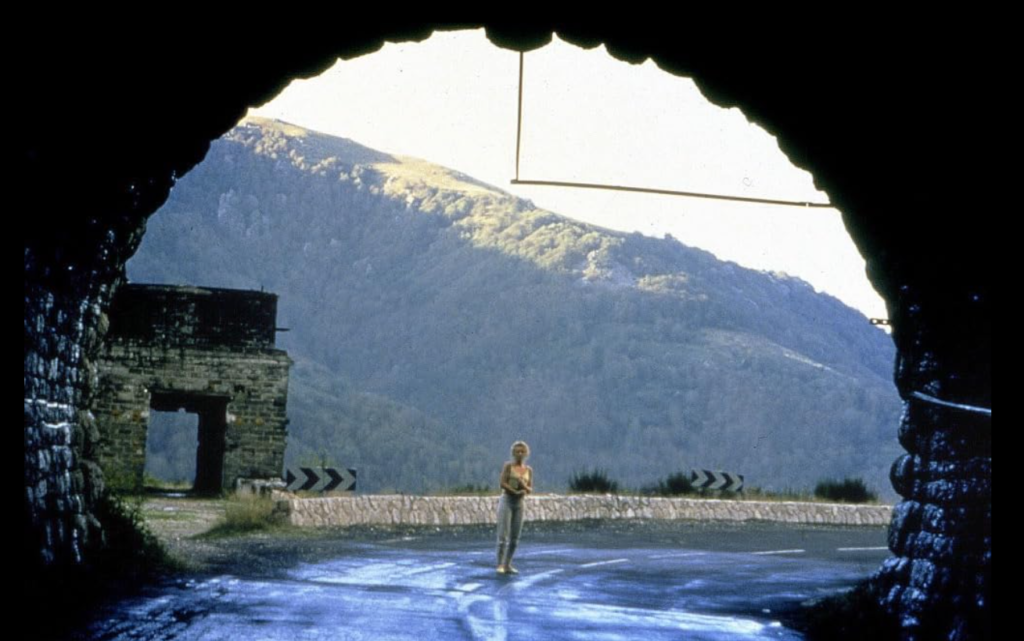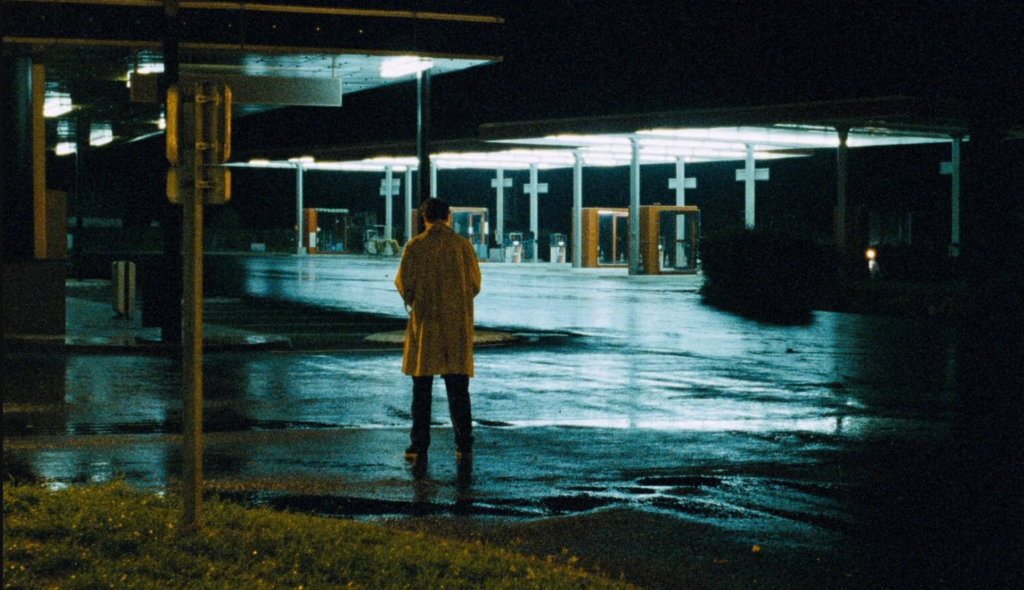|Sophie Durbin|

The Vanishing plays at the Trylon Cinema from Sunday, October 15th, through Tuesday, October 17th. Visit trylon.org for tickets and more information.
This essay contains spoilers for The Vanishing. Read at your own cost!
My first encounter with George Sluizer’s The Vanishing was on a lazy evening in February of 2023. The Criterion Channel description promised a “truly unsettling” ending, which drew me in since I love being upset by fictional peoples’ problems so I don’t have to deal with my own. “Please,” I thought, “Unsettle me!” I did not expect for my palms to sweat straight through my designated movie-watching blanket as I watched the finale. As Rex accepted his bleak death inside the wooden coffin, kicking off his shoes to get more comfortable and cackling manically, I knew this stretched far beyond the realm of a typical horror film. No, The Vanishing felt different: a sickening descent into the depths of human despair. After my first viewing, I became a Vanishing evangelist and assigned various people in my life the task of watching it so I could discuss it as much as I craved. My question was always this: just what about this film makes it so spectacularly horrific?
Certainly, The Vanishing is technically formidable. Every scene is impeccably staged. In the long rest stop sequence, every mundane object, every truck, car, and person in the parking lot becomes a piece of evidence for Rex to turn over as he realizes that Saskia has disappeared. The editing, spare and precise, moves the viewer seamlessly through the killer’s chilling process of trial and error as he prepares for his final task. The acting is top-notch, from Bernard-Pierre Donnadieu’s eerily matter-of-fact portrayal of Raymond to Johanna ter Steege’s brief and impeccably moving turn as Saskia. But the formal qualities cannot account for the sheer amount of dread that pulses through the film. There is something eerily ineffable about the ending, which, though shocking, feels inevitable once it sinks in.
The film is framed by Saskia’s nightmare in which she floats alone in space in a golden egg. There remains a minute chance that she may float past another trapped person in a golden egg, but this possibility is remote. In the novel upon which the film is based, we learn that Saskia has been having this dream since childhood.1 Every aspect of Rex and Saskia’s fates can be traced directly to this dream. This reminded me of an intriguing book called Insomniac Dreams: Experiments With Time by Vladimir Nabokov, compiled by Gennady Barabtarlo. In the book, Barabtarlo follows Nabokov’s fascination with metaphysical English poet John Donne’s reverse concept of time, which suggested that time “moves in reverse” and “a later event may generate an earlier dream.”2 Here, dreams are not premonitions in the traditional sense: they are reflections upon predetermined futures. Considering Saskia’s dream this way, The Vanishing begins to make sense. Every event from the moment the film starts can be read to suggest that the cruel and disturbing finale generated by the dream from her childhood. In other words, since her youth, Saskia has been processing the eventuality of being buried alive.
The scene that tipped me off to a possible mysterious dream logic occurs when Rex visits the Italian countryside with his new girlfriend three years after Saskia’s disappearance. He suddenly collapses to the ground. He tosses and turns in terror, muttering the words “golden egg.” But this isn’t an ordinary nightmare—his body language is oddly constricted, like he’s suffocating, and he snatches at the air just a few inches above him. Lying awake in bed after watching the film, I found myself covered in goosebumps when I realized that in this moment, he was mimicking the kinetic movement he later makes as he awakens in the box. This reminded me of A Tale of Two Sisters, in which a character experiences a seizure that prefigures her being crushed by a wardrobe. Like Saskia’s golden egg dream, this is where Rex’s subconscious becomes aware of his eventual fate.

Once we look at The Vanishing as a march backward through time, other moments gain a new significance. In the beginning, Saskia’s anxiety at being left alone while Rex goes for gas mirrors the ending, when we see her once again in the light at the end of the highway tunnel. The coins that Saskia and Rex bury under the tree resemble their bodies, buried just feet apart in the killer’s backyard. The Polaroid that Rex takes at the rest stop becomes the final image Rex can remember from before he knew Saskia was gone—and yet, the objects in the image define every action he takes upon her disappearance. Like any classic tragedy, the film’s protagonist seals his own fate as he tries to escape it, and his primary motivation becomes his downfall.
- Krabbe, Tim. The Vanishing. New York: Random House, 1993. (Originally published in Dutch in 1984) ↩︎
- Nabokov, Vladimir Vladimirovič, and Gennady Barabtarlo. Insomniac Dreams: Experiments with Time. Princeton: Princeton University Press, 2018. ↩︎
Edited by Finn Odum
